Results 5,681 to 5,690 of 12094
Thread: Anandtech News
-
01-25-16, 07:12 AM #5681
Anandtech: The Google Pixel C Review
In early 2010, Google and HTC launched the Nexus One. While it was designed in a partnership between Google and HTC, it represented Google's first step into the arena of smartphone hardware design. Since that time, having a Nexus device designed and manufactured in partnership with another OEM has been something of a tradition for Google, and there have been many partnerships and products released in the six years since the Nexus One launched. While the Nexus program has remained strong, the products were technically branded by their respective manufacturers, even with Google's heavy involvement in the design process.
In 2013 Google made an exception to the trend set by the Nexus devices. The device was not an Android device, but a Chrome OS device instead. It was the original Chromebook Pixel, and it was entirely designed, branded, and supported by Google. Last year the original Chromebook Pixel received a successor in the form of the Chromebook Pixel (2015). Google was clearly testing the waters of hardware design and cooperating with companies only for hardware assembly, but they were still yet to ship an Android device that was entirely Google made and branded. The Google Pixel C bucks the trend, and provides the first Android experience which is solely in Google's hands. Read on for the full review of the Google Pixel C.
More...
-
01-25-16, 07:12 AM #5682
Anandtech: Thermal Imaging at CES - FLIR and Seek Thermal
Thermal imaging has become more accessible to the average consumer, thanks to advances in the development of low-cost infrared sensors / microbolometers. FLIR was one of the first to make a breakthrough in this segment with the development of the low-cost Lepton sensor (80x60) that was used in the first-generation FLIR One Thermal Imager for iPhone 5/5s. In the meanwhile, Seek Thermal, a startup, debuted their low-cost microbolometer (206x156) in the Seek Thermal Infrared Camera.
In 2015, FLIR continued to make advancements in the sensor space with the launch of the Lepton 3, a 160x120 microbolometer. This sensor was used in the second-generation FLIR One cameras (including the Android version that we have been using in our reviews of mini-PCs). Seek Thermal, on the other hand, had entered the market with a higher resolution sensor. So, their focus has been on developing new products to widen the appeal / addressable market for that sensor. At CES 2016, FLIR demonstrated a couple of new products based on the Lepton sensors, while Seek Thermal showed the products introduced through the course of 2015.
FLIR
The FLIR Scout TK is a stand-alone and rugged thermal camera with specifications similar to the FLIR ONE (i.e, the same 160x120 Lepton 3 sensor), but, meant for outdoor use. It comes with storage for photos and videos, and they can be transferred to a computer for further review. The FoV is narrow, meant more for viewing objects / animals up to 90m away. There is a 640x480 LCD display on one end, and the industrial design allows for one handed operation. The intended use-case is outdoor enthusiasts who want to spot wildlife in the night or in low light situations, as well as those interested in personal and home security. The product uses an internal Li-ion battery that is rechargeable. It can support up to 5 hours of continuous operation with a fully charged battery.
The TG130, a entry-level spot thermal camera for home and small businesses. It is based on the first-generation Lepton core (80x60 sensor). It is targeted at home users who want to find out insulation issues (places of heat loss in a house). It can also help in determining correctness of HVAC operation, electrical equipment troubleshooting, and refrigerator maintenance. There is no storage media to record to, as the usage involves pointing and clicking to freeze the image with the temperature being part of the OSD. The product uses 3xAAA batteries. It can support up to 4 hours of continuous operation with one set of fully charged batteries.
At the FLIR booth, we had the chance to see working models of both the Scout TK as well as the TG130 along with a host of other thermal imagers from FLIR targeting the professional market. The Scout TK and TG130 are both slated to ship later this quarter.
Gallery: FLIR Booth at CES 2016
The Scout TK will be priced at $599, while the TG130 will be priced more economically at $249 due to the use of the first-generation Lepton sensor and lack of any recording capabilities.
Seek Thermal
Seek Thermal was showing off the camera models introduced over the course of 2015 at CES. These included the Compact and Compact XR thermal imaging cameras. The Compact is suited for indoor analysis while the Compact XR is suitable for outdoor use. They are both available in iOS and Android versions. The main difference between the first-generation Seek Thermal Infrared camera that we reviewed and the Seek Thermal Compact / Compact XR is the availability of zooming capabilities for better focus on the area of interest in the latter. The availability of the 'optical' zooming feature enables the Compact to have a range of 300m and the Compact XR to have a range of 550m (compared to the 90m range of the equivalent FLIR cameras). The Compact (indoor use) has a 36 degree FoV, while the Compact XR (outdoor use) has a 20 degree FoV.
In addition, Seek Thermal also demonstrated the Seek Reveal, which is very similar to the FLIR TG130 in terms of use-cases. The added capabilities include a 300 lm. integrated LED flashlight, ruggedness and the ability to withstand submergence in water. The LCD display has a 240x320 resolution. A micro-USB cable can be used to transfer recorded images. The device has a range of around 150m and has a 36 degree FoV similar to the Compact. All of the Seek Thermal offerings are still based on the original 206x156 thermal sensor. While the Compact and CompactXR retail for $249 and $299 respectively, the Reveal, with its in-built display and smartphone-free operation, retails for $399.
Concluding Remarks
The offerings from FLIR and Seek Thermal have given consumers a wide range of thermal imaging products to choose from, depending on the intended use-case. We would like to see FLIR improve their Android app for better compatibility with a wider range of mobile devices. Hopefully, a future update to the Lepton series would help them achieve resolution-parity with the Seek Thermal sensor. That said, FLIR's MSX (one of the proprietary features of some of FLIR's cameras that blends the output of an image sensor and the output of the thermal sensor) seems to make up for the disappointing thermal sensor resolution to some extent. On the other side, we would like to see if Seek Thermal can bring in thermal sensors with better resolution at similar price points. On a common note, government restrictions still prevent thermal imagers from offering greater than 9 FPS for videos without going through extensive paper work. Hopefully, the advent of low-cost thermal imagers like the ones from FLIR and Seek Thermal can help in making this situation better.
More...
-
01-26-16, 10:30 AM #5683
Anandtech: CES 2016 Roundup: Total Editor Recall
Another year, another Consumer Electronics Show - actually, it seems that it's official name is now just CES. Nonetheless, it ends up being one of the biggest shows of the year for technology, if not the biggest. Covering PC to smartphone to TV to IoT to the home and the car, CES promises to have it all. It's just a shame that the week involves so many press events and 7am-midnight meeting schedules it can be difficult to take it all in, especially with 170,000 people attending. With the best of interests, we did take some information away and we asked each editor to describe the most memorable bits of their show.
More...
-
01-26-16, 11:31 AM #5684
Anandtech: Skylake Iris Pro hits Intel’s Pricing Lists: Xeon E3-1575M v5 with GT4e
One of our forum members, Sweepr, posted Intel’s latest pricing list for OEMs dated the 24th of January and it contained a number of interesting parts worth documenting. The Braswell parts and Skylake Celerons were disclosed over the past few months are now available to OEMs, but it’s the parts with Iris Pro that have our attention.
Iris Pro is Intel’s name for their high end graphics solution. Using their latest graphics microarchitecture, Gen9, Iris Pro packs in the most execution units (72) as well as a big scoop of eDRAM. At the minute we assume it’s the 128 MB edition as Intel’s roadmaps have stated a 4+4e part only on mobile, rather than a 4+3e part with 64 MB (only the 2+3e parts are listed as 64MB), although we are looking for confirmation.
The new parts are listed as:
Xeon E3-1575M v5 (8M cache, 4 Cores, 8 Threads, 3.00 GHz, 14nm) - $1,207
Xeon E3-1545M v5 (8M cache, 4 Cores, 8 Threads, 2.90 GHz, 14nm) - $679
Xeon E3-1515M v5 (8M cache, 4 Cores, 8 Threads, 2.80 GHz, 14nm) - $489
These will compare to the non-Iris Pro counterparts, running P530 graphics (4+2, 24 EUs):
Xeon E3-1535M v5 (8M cache, 4 Cores, 8 Threads, 2.90 GHz, 14nm) - $623
Xeon E3-1505M v5 (8M cache, 4 Cores, 8 Threads, 2.80 GHz, 14nm) - $434
As Sweepr points out, the difference between the 2.8-2.9 GHz parts is only $55-56. That is for both the increase in graphics EUs (24 to 72) as well as that extra on-package eDRAM.
We have more reasons to be excited over the eDRAM in Skylake than what we saw before in Haswell with the i7-4950HQ on mobile and Broadwell on desktop with the i7-5775C, i5-5765C and the relevant Xeons. With the older platforms, the eDRAM was not a proper bidirectional cache per se. It was used as a victim cache, such that data that was spurned from the L3 cache on the CPU ended up in eDRAM, but the CPU could not place data from the DRAM into the eDRAM without using it first (prefetch prediction). This also meant that the eDRAM was invisible to any other devices on the system, and without specific hooks couldn’t be used by most software or peripherals.
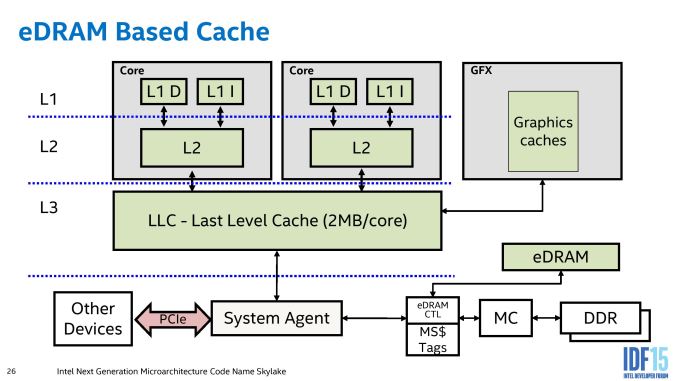
With Skylake, this changes, the eDRAM lies beyond the L3 and the System Agent as a pathway to DRAM, meaning that any data that wants DRAM space will go through the eDRAM in search for it. Rather than acting as a pseudo-L4 cache, the eDRAM becomes a DRAM buffer and automatically transparent to any software (CPU or IGP) that requires DRAM access. As a result, other hardware that communicates through the system agent (such as PCIe devices or data from the chipset) and requires information in DRAM does not need to navigate through the L3 cache on the processor. Technically graphics workloads still need to circle around the system agent, perhaps drawing a little more power, but GPU drivers need not worry about the size of the eDRAM when it becomes buffer-esque and is accessed before the memory controller is adjusted into a higher power read request. The underlying message is that the eDRAM is now observed by all DRAM accesses, allowing it to be fully coherent and no need for it to be flushed to maintain that coherence. Also, for display engine tasks, it can bypass the L3 when required in a standard DRAM access scenario. While the purpose of the eDRAM is to be as seamless as possible, Intel is allowing some level on control at the driver level allowing textures larger than the L3 to reside only in eDRAM in order to prevent overwriting the data contained in the L3 and having to recache it for other workloads.
We go into more detail on the changes to Skylake’s eDRAM in our microarchitecture analysis piece, back from September.
The fact that Intel is approaching the mobile Xeon market first, rather than the consumer market as in Haswell, should be noted. eDRAM has always been seen as a power play for heavy DRAM workloads, which arguably occur more in professional environments. That still doesn’t stop desktop users requesting it as well – the fact that the jump from 4+2 to a 4+4e package is only $55-$56 means that if we apply the same metrics to desktop processors, an i5-6600K with eDRAM would be $299 in retail (vs. $243 MSRP on the standard i5-6600K).
One of the big tasks this year will be to see how the eDRAM, in the new guise as a DRAM buffer, makes a difference to consumer and enterprise workloads. Now that there are two pairs of CPUs on Intel’s pricing list that are identical aside from the eDRAM, we have to go searching for a source. It seems that HP has already released a datasheet showing the HP ZBook 17 G3 Mobile Workstation as being offered with the E3-1575 v5, which Intel lists as a whopping $1207. That's certainly not the extra $55.
Source: AnandTech Forums, Intel
More...
-
01-26-16, 05:30 PM #5685
Anandtech: Apple Reports Q1 FY 2016 Results: Record Revenue Despite Flat iPhone Sales
Today Apple announced their quarter 1 earnings, and once again Apple had record revenue of $75.9 billion, and a record quarterly profit of $18.4 billion. Revenue is up 2% compared to Q1 2015, and 66% of the quarter’s revenue came from International sales. Gross margin for the quarter was 40.1%, or $30.4 billion, up from 39.9% and $29.7 billion last year. Operating income was down slightly to $24.171 billion, but net income was $18.361 billion, which is up 1.8% year-over-year.
Although the company had record iPhone sales, it was only just a record. It is still a massive part of their business, and for the quarter Apple sold 74.779 million iPhones, with an average selling price of $691. Compared to the year ago quarter, this is a gain of 311,000 iPhones. That’s a pretty small gain, and percentage wise Apple calls it a year-over-year change of 0%. Although the growth is not there, that is still a huge amount of devices sold. iPhones accounted for $51.6 billion in Apple’s revenue this quarter.Apple Q1 2016 Financial Results (GAAP) Q1'2016 Q4'2015Q1'2015 Revenue (in Billions USD) $75.872 $51.501 $74.599 Gross Margin (in Billions USD) $30.423 $20.548 $29.741 Operating Income (in Billions USD) $24.171 $14.623 $24.246 Net Income (in Billions USD) $18.361 $11.124 $18.024 Margins 40.1% 39.9% 39.9% Earnings per Share (in USD) $3.30 $1.96 $3.08
iPad has been a tricky market for Apple. After initial sales figures with huge growth, the platform stopped growing and started having a drop in sales quite a few quarters ago. The release of the iPad Pro was hoped to kick-start this, but, at least for the launch quarter, that has not been the case. iPad sales continued their fall, and in fact had an even larger drop of 25% year-over-year to 16.1 million devices. Revenue from iPads dropped 21% to $7.084 billion.
Mac sales were also down, with a year-over-year drop of 4% to 5.3 million devices sold. Revenue went down slightly less than that, with just a 3% drop, to $6.7 billion. Considering the slowdown in the PC market, the drop is less than what we’ve seen from the PC market as a whole, but still a drop nonetheless. Regardless, Apple is likely pretty happy with Mac sales, which have weathered the storm better than many other brands. Dividing revenue by sales leads to an average of $1269.95 per Mac sale, which is territory most other OEMs would love to be in.
Services, which includes the App Store, AppleCare, Apple Pay, licensing, and other services, had a much better quarter. This segment had revenue of $6.056 billion for the quarter, which is a 26% increase year-over-year.Apple Q1 2016 Device Sales (thousands) Q1'2016 Q4'2015Q1'2015 Seq Change Year/Year Change iPhone 74,779 48,046 74,468 +56% 0% iPad 16,122 9,883 21,419 +63% -25% Mac 5,312 5,709 5,519 -7% -4%
Finally, Other Products, which includes Apple TV, Apple Watch, Beats, iPod, and accessories, had another great gain of 62% in revenue to $4.351 billion. Apple doesn’t break out individual numbers for this segment, but considering the Apple Watch did not exist in the 2015 numbers, you can be sure a lot of the gain is from this new product introduction.
Apple will pay a dividend of $0.52 per share, payable to shareholders of record as of February 8. The payment will be made on February 11. Apple paid back $9 billion to shareholders this quarter, through share buybacks and dividend payments. They have now paid out $153 billion of their $200 billion capital return program.Apple Q1 2016 Revenue by Product (billions) Q1'2016 Q4'2015 Q1'2015 Revenue for current quarter iPhone $51.635 $32.209 $51.182 68.05% iPad $7.084 $4.726 $8.985 9.34% Mac $6.746 $6.882 $6.944 8.89% iTunes/Software/Services $6.056 $5.086 $4.799 7.98% Other Products $4.351 $3.048 $2.689 5.73%
Looking forward to next quarter, the forecast is decidedly down, with Apple expecting revenue of $50-53 billion, and margins of 39-39.5%. In Q2 2015, Apple had revenue of $58 billion, so this is a big drop. As always, forecasts are just that, and we’ll have to wait for their actual numbers to see how they do.
Apple had a record quarter, but flat iPhone sales, and a drop in iPad and Mac sales are definite sour notes on this otherwise great quarter. Apple did say that currency rates have had a big impact this quarter, and “$100 of Apple’s non-U.S. dollar revenue in Q4’14 translates into only $85 U.S. dollars today”, which is going to be a big factor in earnings. Looking at a Constant Currency calculation, revenue would have been up 8% instead of 2%. Still, for a company with a net income higher than the revenue of many other players in the tech space, I think they will be OK.
Source: Apple Investor Relations
More...
-
01-27-16, 07:33 AM #5686
Anandtech: The Cherry MX Board 6.0 Mechanical Keyboard Review
We frequently review mechanical keyboards here in AnandTech. Over half of them come with mechanical switches from Cherry, and for good reason. If you are keeping track of our recent reviews, you should have noticed that Cherry's switches generally are more consistent than any other type we have tested to this date. Cherry is virtually the inventor of the modern mechanical keyboard switch (not to be confused with the classic buckling spring), manufacturing and marketing them since nearly three decades ago. It is only because their patent expired that other manufacturers were able to copy their switch designs.
With all of that said, Cherry is not only supplying their switches to other keyboard manufacturers. As a matter of fact, the company has a significant line-up of their own keyboard and mouse products. On the other hand, Cherry's products are almost exclusively aimed towards professionals and for specific applications, such as keyboards with biometric or magnetic card readers for security. Considering the target market of their products, naturally their keyboards were using just plastic black or beige parts and never looked like anything special. However, Cherry is taking a huge leap of faith and releasing a new keyboard, the MX Board 6.0, which a mere glance upon it is enough to reveal that it is nothing like their previous products.
More...
-
01-27-16, 08:51 AM #5687
Anandtech: Intel and Tsinghua University to Co-Develop Semi-Custom Solutions for Serv
At present, investors state that Intel controls 98% of the server processor market with its Xeon CPUs, but the server market is changing. Intel's acquisition of Altera is telling - many companies these days require chips with specific features and functionality, and as a result Intel has been making strides to add custom features to its processors. In an extension of this, this month Intel agreed to jointly work with Tsinghua University and Montage Technology to develop custom server platforms for servers used in China.
Under the terms of the agreement, Tsinghua University will develop a reconfigurable computing processor (RCP) module, as well as system software, that will work with a standard Intel Xeon CPU to add features that address requirements for specific applications in various market segments in Asia. The RCP will be made by outsourcing to a maker of semiconductors and it is likely that the government-controlled university may prefer to make the chip in the country or through a subsidiary.
The computing solution proposed consists of an Intel Xeon and a custom RCP, but will not be a multi-chip-module package designs like Intel’s Xeon processors with integrated Altera FPGAs. Instead we are told it will involve a different kind of packaging. Unfortunately, at present it is unclear whether Intel’s Xeon and Tsinghua’s RCP will communicate using known standards (such as the PCI Express interface, QPI, or other), or a custom protocol.
Intel, TU and Montage did not disclose a lot of technical details about their joint semi-custom solution for Chinese datacenters, but re-configurability of processors implies that the final product could address a broad range of market segments. We postulated that the RCP is just another name for an FPGA, although our sources were unable to confirm this.
Intel will ensure that its chips work with RCPs, and will supply CPU dies to Montage Technology which will market the whole solution to interested parties. Montage plans to sell the final product, which will consist of a standard Intel Xeon CPU, a reconfigurable computing processor developed by Tsinghua, as well as software, in 2017. There is no information about specifications of the Xeon processor lines that will be used, nor the capabilities of the RCP, which still leaves the question of what range of CPUs are being discussed, if it is sub-25W or 90W+.
The collaboration between Intel, Tsinghua University and Montage is aimed to better address demands of Chinese state-owned and other datacenters. Since China is one of the world’s largest markets for servers, the importance of jointly working with local companies is something that is becoming very important not only for Intel, but for all developers of server CPUs, especially as news emerged last year about how Intel and others can or cannot sell to various entities. Intel has arrangements similar to this already in place, such as the Rockchip engagement for some smartphone-based SoCs to be made and sold by Rockchip in Asia, as well as arrangements with Spreadtrum (which is owned by Tsinghua Unigroup, to which Tsinghua University has sole investment).
More...
-
01-27-16, 05:00 PM #5688
Anandtech: NVIDIA’s Partners Roll-Out GeForce GT 710 to Fight Integrated Graphics
Advancements made by iGPUs by AMD and Intel in the recent years essentially destroyed the market of inexpensive discrete video cards. High-performance iGPUs can outperform low-end standalone graphics adapters these days and for a lot of users performance of integrated graphics is enough. Nonetheless, there's still a smaller market for low-end add-in boards - notably as upgrades to true entry-level PCs - and to that end NVIDIA’s partners this week released a new breed of low-end graphics cards targeting entry-level PCs.
The new NVIDIA GeForce GT 710 video cards are based on a cut-down version of the company's existing GK208 GPU, with 192 stream processors, 16 texture units and 8 ROPs. As this is a Kepler architecture product, you'll find baseline support for Direct3D feature level 11_0 but not newer features found in the Maxwell generation such as HDMI 2.0, which is likely why NVIDIA opted to launch this as a 700 series product. Peak compute performance of the GPU when clocked at 954 MHz is around 366 GFLOPS, which is below that of contemporary higher-end iGPUs by Intel or AMD. The GeForce GT 710 graphics cards are equipped with 1 or 2 GB or DDR3-1800 memory featuring 14.4 GB/s bandwidth.
Makers of graphics cards position their NVIDIA GeForce GT 710 boards as solutions for entry-level PCs running Intel Celeron or Intel Pentium processors with mediocre iGPUs, and these are typically the comparisons you'llsee vendors make as it doesn't take much to surpass low-end iGPUs. That said, while the GeForce GT 710 can indeed be considerably faster than outdated integrated GPUs, it is unlikely that it can enable decent performance in demanding video games, and this is more likely to be pitched as a card for MOBAs and similar low-impact games.NVIDIA GPU Specification Comparison GT 710 GT 720 GT 630 GT 610 CUDA Cores 192 192 192 48 Texture Units 16 16 16 8 ROPs 8 8 16 4 Core Clock 954MHz 797MHz 875MHz 710MHz Shader Clock N/A N/A N/A 1620MHz Memory Clock 1.8GHz DDR3 1.8GHz DDR3/ 5GHz GDDR5 1.8GHz DDR3 1.8GHz DDR3 Memory Bus Width 64-bit 64-bit 64-bit 64-bit VRAM 1GB or 2GB 1GB or 2GB 1GB or 2GB 1GB TDP 19W 19W 50W 29W GPU GK208 GK208 GK107 GF119 Launch Timeframe January, 2016 March, 2014 April, 2012 May, 2012 Launch Price $30 - $50 $49 OEM $49
From a sales perspective, since the GK208 GPU is not a new graphics chip - having been launched back in 2013 - it is somewhat surprising to see that virtually all partners of NVIDIA decided to release their new video cards powered by the GPU. The market for such adapters is very limited these days because 100% of entry-level PCs use iGPUs. Moreover, even in countries like China, where inexpensive hardware is sold in large quantities, more and more gamers are adopting higher-end discrete video cards, according to media reports.
Meanwhile from a technical perspective, as the GeForce GTX 710 are designed for low-end PCs, many of such video cards come in half-height/half-length form-factor. Typical for low-end cards (especially those expected to sell well in the APAC market), all of the GT 710s we've seen so far feature D-Sub analogue monitor output for compatibility with older monitors, along with the more typical DVI and/or HDMI/DP connectors. Meanwhile GT 710 is rated for a TDP of just 20 W, so many of the cards use passive cooling solutions, while the rest feature small fans.
The NVIDIA GeForce GT 710 graphics cards are available from companies like ASUS, EVGA, Galax, Gigabyte, Inno3D, Palit Multimedia, Manli, MSI, ZOTAC and some others. Prices of the GeForce GT 710-based graphics adapters vary, but typically such cards cost from $30 to $50 in the U.S.
More...
-
01-27-16, 06:32 PM #5689
Anandtech: Windows 10 Mobile Has A Cellular Data Eating Bug
Although Windows 10 has got off to a great start by pretty much any metric, Microsoft’s mobile version of Windows 10 has had a pretty bumpy road. Originally thought to be an update for current phones sometime late last year, Windows 10 Mobile is still not available unless you purchase a new Lumia 950, 950 XL, or the budget Lumia 550, all of which were announced in October in New York City along with the Surface Pro 4 and Surface Book.
That does not preclude people from using the new mobile operating system on their existing handsets, because Microsoft offers people in the Windows Insider program access to the pre-release software. Windows 10 Mobile is available for quite a few Lumia handsets, as well as a couple of others like the HTC One M8 for Windows.
For those either with one of the newer Lumia phones, or if you are running on the pre-release version of Windows 10 Mobile on an existing handset, one nasty bug caught me out this month. Windows 10 Mobile includes Data Sense, which originally came back with Windows Phone 8.1, and this system tool monitors all network traffic and reports back usage over WiFi and Cellular. On my own Lumia 950 XL, I noticed I had used more cellular data in January than I had ever used in a single month before. Data Sense let me know that a process called “System” had used over 900 MB of cellular data in just 17 days. Beautifully vague as all bugs are.
Speaking with some other people that use Windows 10 Mobile, I found that it was not an isolated incident. Other users had been reporting the same issue, and in some cases they had used quite a bit more data than this. The culprit, it seems, is a setting which is on by default that backs up text messages to OneDrive, so that you can get them back if you get a new phone or wipe your current phone. It’s a feature that has been part of Windows Phone for some time, and I’ve always left it enabled. Disabling this setting reduces the cellular data usage back to normal. In the messaging app main window, hit the … in the bottom right corner, choose Settings, and turn off Message Sync. To be clear, backing up the text messages should only use a small amount of data, and really it should do it over WiFi only. This is a feature I will re-enable when the bug is resolved.
In addition, Windows 10 Mobile offers a new feature which will back up install apps to OneDrive as well, and that can be disabled too since it may also contribute to cellular data usage, even if things like the Store are set to download updates only over WiFi. This setting is found under Backup settings.
I reached out to Microsoft to see if they were aware of this issue. In the current age of mobile data caps, this can and has caught people out, causing them to have to pay overage charges with their cellular providers. A Microsoft spokesperson said:
“We have received some customer feedback regarding unexpected mobile data usage and are looking into this.”
The fix provided here is unofficial, in that it hasn’t come directly from Microsoft PR but rather through a Microsoft employee on Reddit thread found by Paul Thurrott of Thurrott.com, but it has appeared to fix the issue I was having. In the last 24 hours, my System process has only used 0.5 MB of data. If you are running Windows 10 Mobile, I would suggest you check into this to avoid racking up any charges on your bill.
More...
-
01-27-16, 11:42 PM #5690
Anandtech: NVIDIA releases 361.75 WHQL Game Ready Driver
With both the new release of Rise of the Tomb Raider and the upcoming Tom Clancy’s The Division beta, NVIDIA has diligently prepared a new game ready driver to bring their optimizations for Geforce card owners. Alongside that we have the usual bug fixes and even the long awaited beta feature of Thunderbolt graphics.
This driver update brings us to version 361.75, and also brings a small list of fixes. Along with stability changes such as fixing notebooks crashing in Photoshop CC 2015 and the NVIDIA control panel failing to launch, NVIDIA has brought their fix for GPU clock speeds remaining above idle on 144Hz monitors to SLI configurations on all versions of windows since Vista.
In my opinion the bigger news this time around is report of beta support for running GeForce GTX GPUs externally over Thunderbolt 3 has been included in this release. Supported cards include the Geforce GTX 750 and 750Ti, the GTX 900 series, and the Titan X. If all goes well this feature will open up some new and possibly exciting use cases for many consumers that need an ultraportable machine and want a good gaming setup, but either don’t have the space for a gaming tower or can’t get a secondary machine for gaming.
Lastly we have the reason for today’s release. This driver update also brings game ready optimizations for both Rise of the Tomb Raider and the upcoming Tom Clancy’s The Division beta. So GeForce owners who are interested in either of these titles will want to take note.
Anyone interested can download the updated drivers through GeForce Experience or on the NVIDIA driver download page.
More...
Thread Information
Users Browsing this Thread
There are currently 16 users browsing this thread. (0 members and 16 guests)





 Quote
Quote
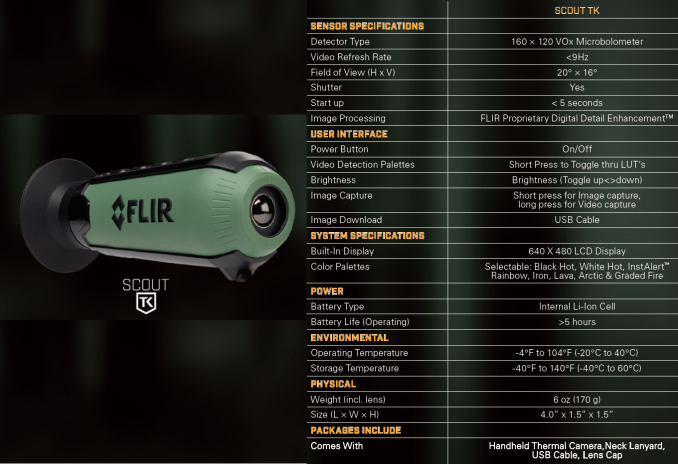
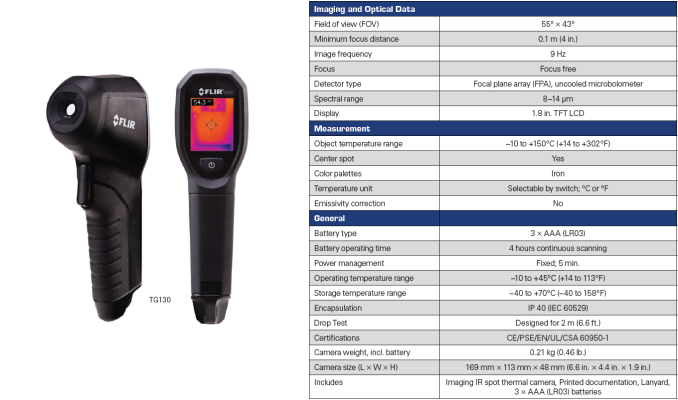





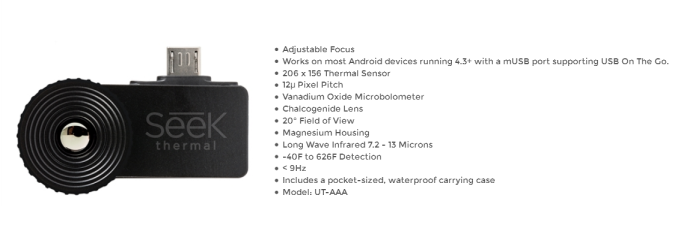
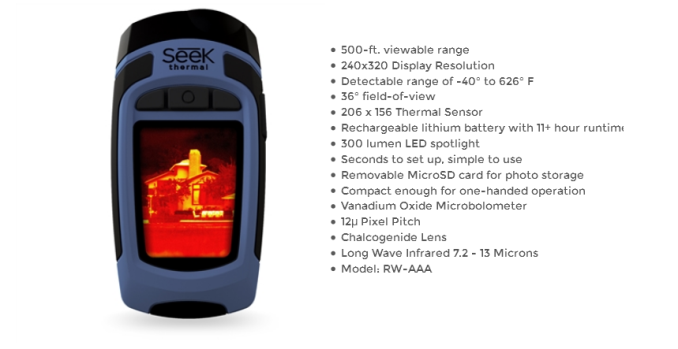

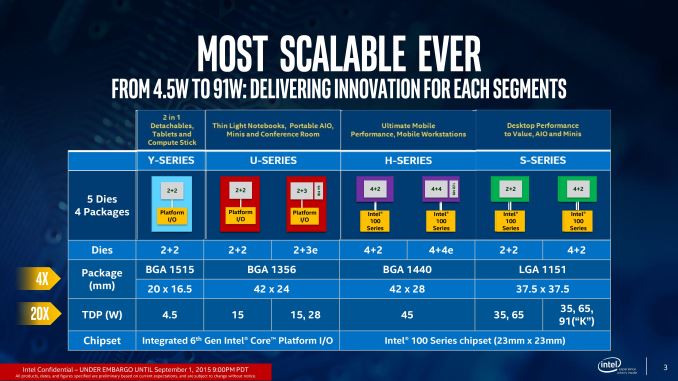
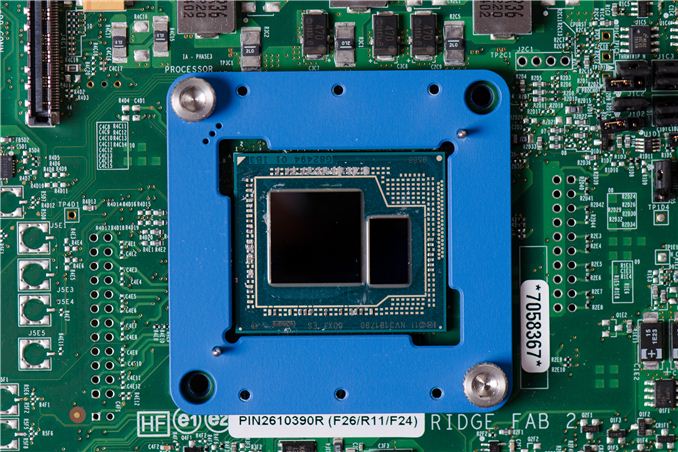
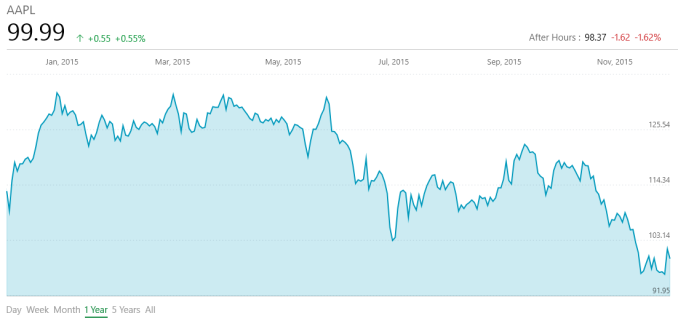


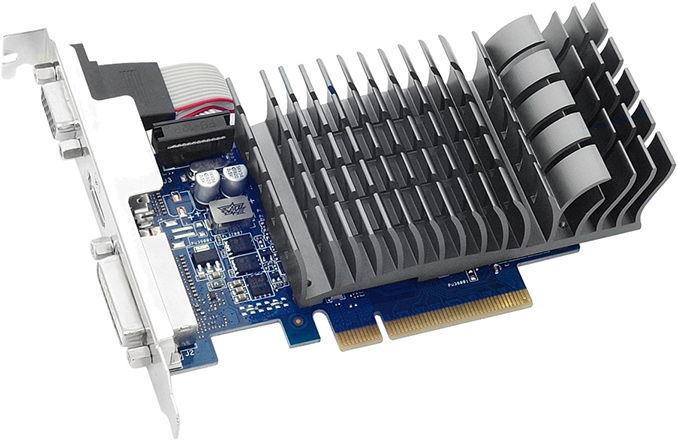
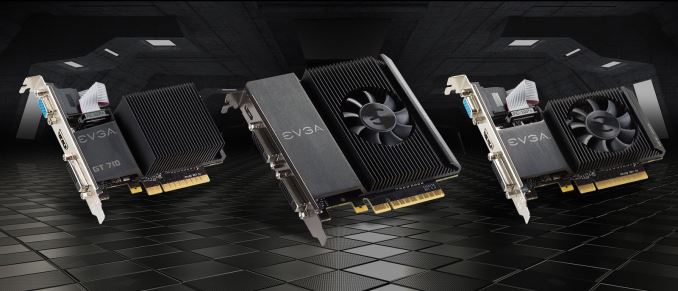




















Bookmarks